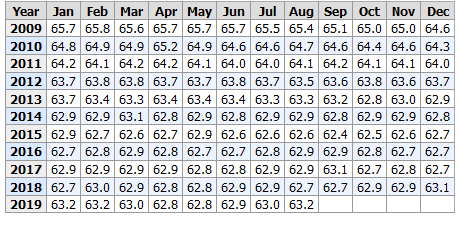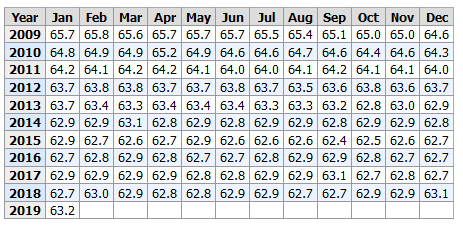The Biden administration claims that the economy is really doing well. Some of us who buy gasoline or shop at grocery stores might not agree with that statement. The other claim has been that there is a booming job market. Our city is have layoffs in some of our local companies, is yours? There seems to be something fishy here. On March 29th, Zero Hedge posted an article explaining what was fishy. This is one of those articles when I post what I don’t totally understand, so please be patient. I have very little to add–the article says it all.
The article reports:
The first red flags emerged in the summer of 2022: that’s when the Biden Labor Department started well and truly rigging the labor market data.
Regular readers may recall that it was back in July of 2022, when we first warned that something had “snapped” in the labor market: that’s when a striking discrepancy emerged between the number of US Payrolls (as measured by the BLS’ Establishment Survey, a far more crude and imprecise, yet much more market-moving data series), and the number of actual Employed Workers (as measured by the BLS’ far more accurate Household Survey) . As we showed then, after the two series had tracked each other tick for tick for years, a wide gap opened in March 2022 which quickly grew to 1.5 million jobs in just 3 months…
The article includes the following chart:
The article further explains:
And while some of this discrepancy could be explained with the record surge in multiple jobholders, which increased by 1 million since March 2022 to an all time high of 8.6 million at the end of 2023 (as a reminder, the Establishment Survey counts 1 worker have 2 or 3 (or more) multiple jobs as, well, 2 or 3 (or more) separate jobs, even if it is just one worker trying to make ends meet under the roaring inflation of Bidenomics), most of the gap remained unexplained.
There was more: it was around the summer of 2022 that the Biden labor department – in its zeal to show job growth no matter the cost, or quality of jobs – also started fooling around with the composition of the labor market, with most of the monthly gains going to part-time workers, even as full-time workers stagnated or declined. The culmination, as we reported earlier this month, is that in February 2024, the US had 132.9 million full-time jobs and 27.9 million part-time jobs. Which is great… until you look back one year and find that in February 2023 the US had 133.2 million full-time jobs, or more than it does one year later! And yes, all the job growth since then has been in part-time jobs, which have increased by 921K since February 2023 (from 27.020 million to 27.941 million).
The article concludes:
Putting it all together, we now know – as the Philly Fed reported first – that the labor market is far weaker than conventionally believed. In fact, no less than 800,000 payrolls are “missing” when one uses the far more accurate Quarterly Census of Employment and Wages data rather than the BLS’ woefully inaccurate and politically mandated payrolls “data”, and if one looks back the the monthly gains across most of 2023, one gets not 230K jobs added on average every month but rather 130K.
Of course, none of that paints Bidenomics in a flattering picture, because while one can at least pretend that issuing $1 trillion in debt every 100 days to add 3 million jos per year is somewhat acceptable, learning that that ridiculous amount buys 800,000 jobs less is hardly the endorsement that the White House needs.
Which is also why nobody in the mainstream media – which is now nothing more than the PR smokescreen for the Biden puppetmasters, the government and the deep state – will ever mention this report.
As such, we urge all readers to read Philly Fed analysis (link here) and to analyze the excel data (link here) at their own leisure, because in a fascist state, the media no longer works for the people.
Think of these numbers when you vote in November.








